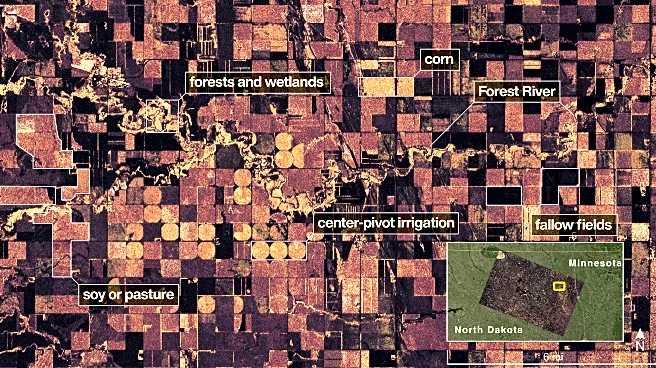What's Happening?
NASA satellites have captured a striking turquoise glow off the southern coast of Australia, caused by a massive bloom of bioluminescent phytoplankton in the Great Australian Bight. This natural phenomenon is visible from space and plays a critical role in the marine ecosystem. The glow results from high concentrations of chlorophyll-a in the phytoplankton, which thrive in nutrient-rich waters. These blooms are essential for supporting a diverse range of marine life, highlighting their ecological significance. The breathtaking glow was first captured by NASA’s PACE spacecraft, equipped with the advanced Ocean Color Instrument (OCI). This region, known for its turbulent currents and deep channels, serves as a significant maritime route to Melbourne’s Port Phillip Bay. The images from the spacecraft have provided scientists with invaluable data on the bloom’s size and intensity.
Why It's Important?
The bioluminescent phytoplankton blooms are foundational to the marine food web, providing a primary food source for various marine organisms. These blooms attract a diverse array of species, including blue whales, sardines, anchovies, tuna, crabs, and numerous fish species, making the region a vibrant hotspot of marine biodiversity. Beyond their ecological role, phytoplankton are vital to global oxygen production and climate regulation. NASA scientists emphasize the importance of these blooms in understanding ocean circulation, nutrient cycling, and seasonal dynamics along the southern Australian coast. The visibility of bioluminescent phytoplankton from space showcases both the beauty and ecological significance of microscopic marine life, highlighting the ocean's role in sustaining life on Earth.
What's Next?
As our understanding of the ocean deepens, events like the bioluminescent phytoplankton bloom offer valuable insights into marine ecosystems. These phenomena underscore the importance of oceanographic research in addressing climate change and maintaining ecological balance. With advancements in satellite technology, our ability to monitor and study these events will continue to improve, opening new avenues for scientific discovery and environmental protection. The ongoing exploration of our oceans holds the promise of unveiling countless mysteries, each discovery offering a deeper understanding of the vital processes that sustain our planet.
Beyond the Headlines
The dynamic interaction of marine elements, such as the presence of different phytoplankton species contributing to the glow, underscores the complexity and beauty of oceanic ecosystems. This offers a glimpse into the intricate processes that sustain life beneath the waves. The visibility of these blooms from space not only captivates our imagination but also highlights the importance of leveraging technological advancements to better protect and preserve the world's oceans for future generations.












